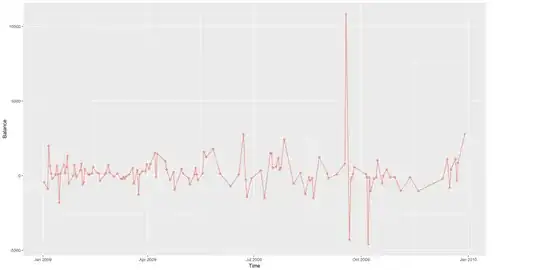Is it possible to use ANOVA to compare to non-nested models that have the same response variable? If not, what is the best way to compare non-nested models that have the same response variable?
- 21
- 1
-
Of possible interest: https://stats.stackexchange.com/q/137557/930. – chl Nov 09 '20 at 08:36
1 Answers
You could use a one-factor ANOVA, but a two-sample t test seems a more natural choice.
For example, suppose you have data from two populations and you want to test whether the population means are equal.
Data sampled in R:
set.seed(118)
x1 = rnorm(50, 100, 15)
summary(x1); length(x1); sd(x1)
Min. 1st Qu. Median Mean 3rd Qu. Max.
63.46 90.72 102.62 100.18 110.84 137.16
[1] 50 # sample size
[1] 16.94674 # sample standard deviation
x2 = rnorm(45, 105, 17)
summary(x2); length(x2); sd(x2)
Min. 1st Qu. Median Mean 3rd Qu. Max.
76.10 94.07 103.96 104.08 114.42 139.13
[1] 45
[1] 14.88124
stripchart(list(x1,x2), pch="|", ylim=c(.5,2.5))
t.test(x1, x2)
Welch Two Sample t-test
data: x1 and x2
t = -1.1933, df = 92.949, p-value = 0.2358
alternative hypothesis:
true difference in means is not equal to 0
95 percent confidence interval:
-10.382125 2.588149
sample estimates:
mean of x mean of y
100.1837 104.0807
I used a Welch two-sample t test rather than a pooled 2-sample t test because the population standard deviations are not equal. The sample mean of the first sample is $\bar X_1 = 100.18$ and for the second sample the mean is $\bar X_2 = 104.08,$ but considering the variability of the two samples, these sample means are not 'significantly different' at the 5% level of significance because the P-value $0.24$ of the test exceeds 5% = $0.05.$
A one-factor ANOVA can compare more than two samples. Results
for the oneway.test. It is usually used when you have three or more samples. in R are as follows.
x = c(x1, x2); gp = rep(1:2, c(50,45))
oneway.test(x ~ gp)
One-way analysis of means
(not assuming equal variances)
data: x and gp
F = 1.424, num df = 1.000, denom df = 92.949,
p-value = 0.2358
Notice that the P-value is the same as for the two-sided, two-sample Welch t test.
- 47,896
- 2
- 28
- 76
